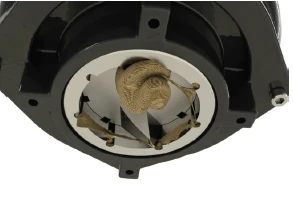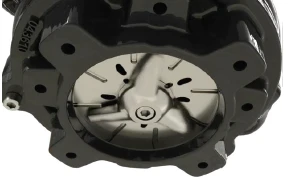Grinder Pump Technology
Grinder pumps are an ideal solution for solids handling applications requiring high head and relatively low flow, particularly when pumping to a force main. They are often found in low pressure sewer systems, which features a network of grinder pumps often serving hundreds of individual residences, though they are also found in smaller commercial or municipal lift stations. A critical feature of grinder pumps is their cutting mechanism, which tends to come in two forms: axial and Radial. Radial cutting mechanisms are the more traditional style of cutters and axial is the newer, cutting edge technology.
Radial Cutting Mechanism
A radial cutting mechanism is a more traditional style of solids reduction in grinder pumps. Radial cutters were designed in the early 1970’s a time that had a very different waste stream than current day. A radial cutting mechanism features a sharp shredder ring with several channels around the radius. In the shredder ring is an angled spinning blade. As items enter the pump, the blade paired with the sharp channels in the shredder ring cut down any item passing through the components. Radial technology is commonly used with higher horse power grinder pumps. Higher horsepower pumps have more torque making them less prone to jamming. Radial grinder pumps can be more susceptible to clogging or jamming on items such as wipes or other flushed items especially if the pump stops running while the process of cutting a solid and then tries to restart.

Axial Cutting Mechanism
Axial cutting mechanisms were engineered to combat the evolving waste stream. The solids content in wastewater is continuously increasing. The increasing solids content is paired with a trend of reduced water consumption, which creates a more challenging waste stream. An axial cutting mechanism features a cutter plate that is mounted to the bottom of the pump with a blade spinning beneath it. These cutter plates can act similar to a cheese grater with the spinning blade attached to the bottom of the suction plate. The Axial cutting mechanism nibbles away at solids until they are completely reduced without the risk of oversized or challenging items stretching across and clogging the cutter. This prevents any large materials from entering the pump without first being grinded into small pieces. The axial cutter can also act as a propeller in the basin, this action mixes the water in the basin, which helps to prevent grease build up in the station. Grease and solids build up in lift stations can cause excess wear on the pumping system or cause the station to turn septic.

